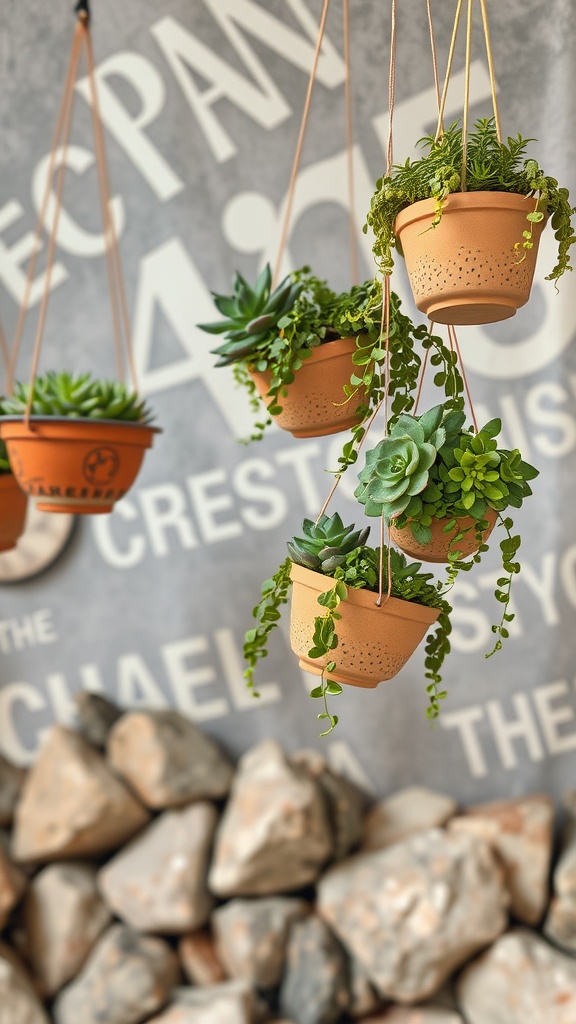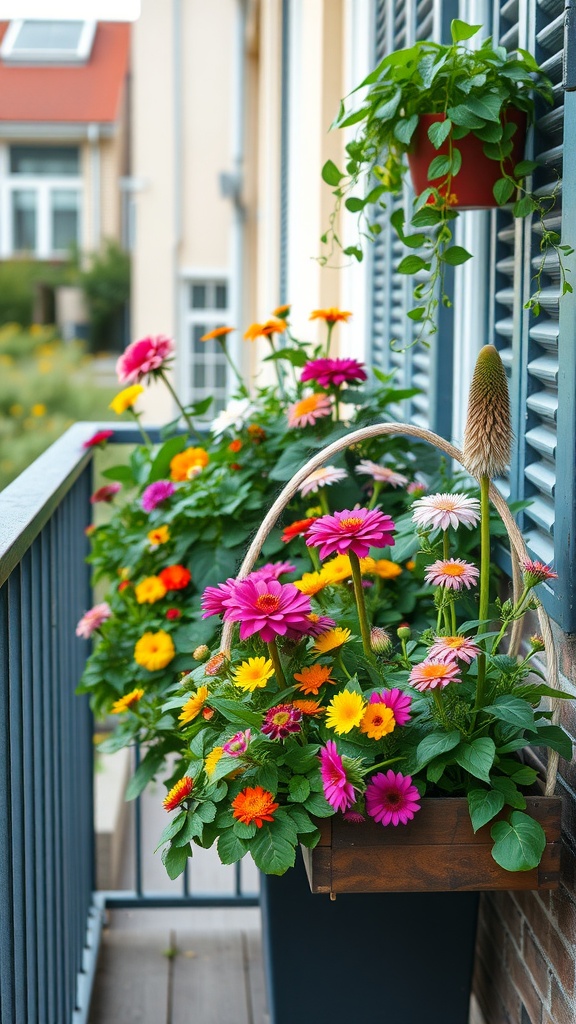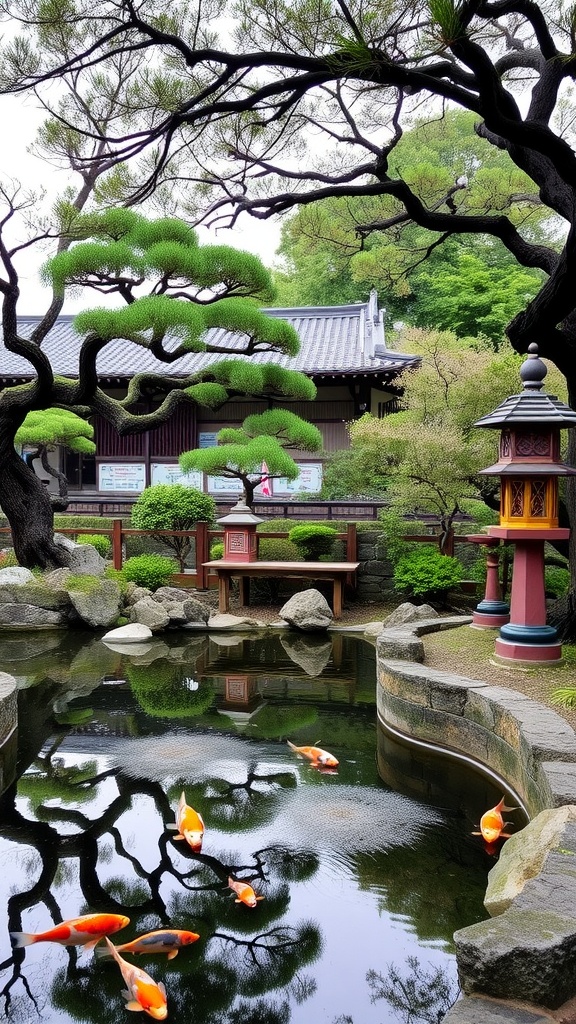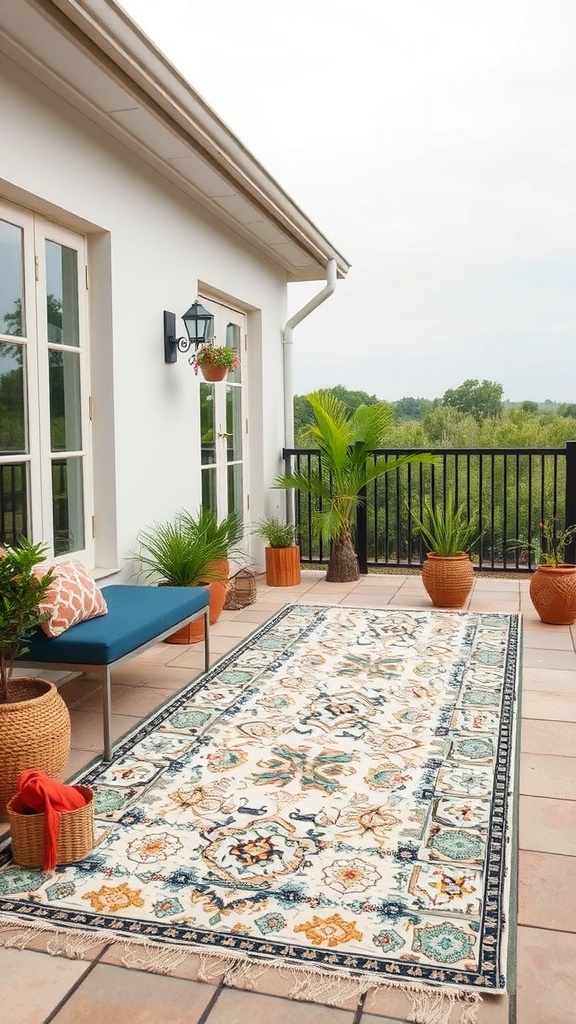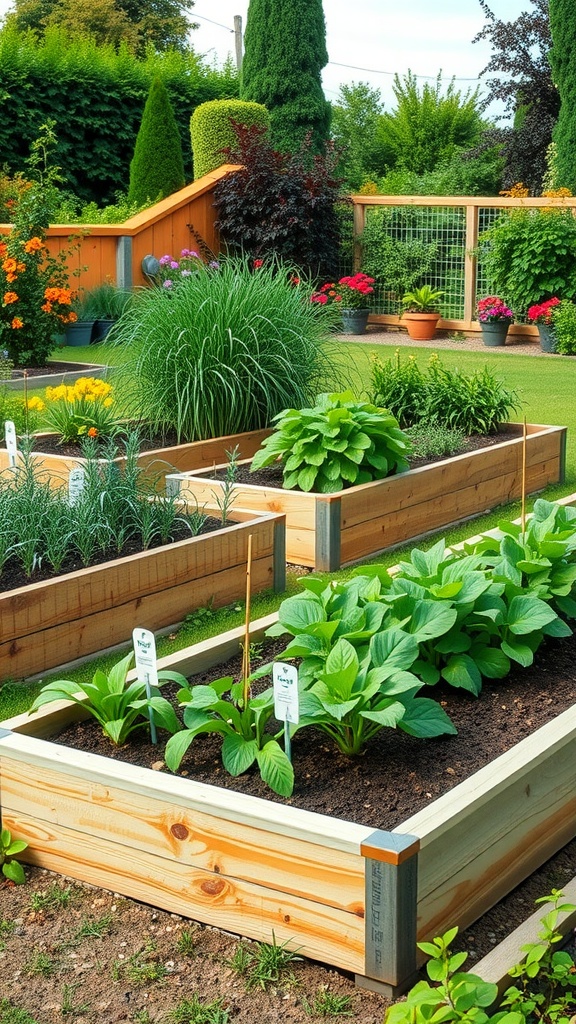As summer winds down and the air turns crisp, it’s the perfect time to start planning your fall vegetable garden. For many gardeners in the USA—especially women aged 25 to 65 who love embracing the rhythms of each season—fall gardening is an incredibly rewarding experience. Cooler temperatures bring fewer pests, less watering, and delicious, hearty vegetables that thrive in the chill.
Whether you’re sprucing up your outdoor living space or giving your modern back porch a cozy seasonal makeover, adding a fall vegetable garden brings charm and purpose to your landscape. And with the right selection of crops, you’ll enjoy a vibrant harvest that lasts well into the cooler months.
Here are 21 of the best fall garden vegetables, complete with growing tips, uses, and expert insights to help you make the most of your garden this season.
1. Kale

Kale is a superstar among fall vegetables—not just for its nutrition, but for its resilience in cooler weather.
This leafy green actually tastes sweeter after a light frost, as the plant produces sugars to protect itself against cold temperatures. That’s a win for your taste buds and your garden. Plant kale about 6 to 8 weeks before your first expected frost. It prefers well-drained soil rich in organic matter and thrives in full sun to partial shade.
Kale is incredibly versatile in the kitchen. Use it in soups, stews, smoothies, or even baked into crispy chips for a healthy snack. It also adds a rustic, decorative flair to your fall back porch decor when grown in pots or raised beds.
Thanks to its long growing season, you can enjoy kale from early fall through the beginning of winter in many regions. Look for varieties like Lacinato (also called Dinosaur kale) or Red Russian for different textures and colors to add visual appeal to your garden.
2. Carrots

Carrots are one of the easiest fall garden vegetables to grow—and they’re also incredibly rewarding to harvest.
Plant carrot seeds directly into the ground about 10 to 12 weeks before your first frost date. They prefer loose, sandy soil to allow the roots to grow long and straight. Keep the soil moist, especially while the seeds are germinating.
One of the joys of growing carrots in fall is that, like kale, their flavor intensifies after a frost. The cold converts starches into sugars, giving them a sweeter, crisper taste.
Carrots are a great addition to your outdoor living plans, especially when planted along modern patio furniture borders or walkways, adding subtle greenery and color that enhances your space’s aesthetic. They’re also a great project if you’re involving kids in the gardening process.
Try different varieties like Nantes or Chantenay for unique shapes and growing habits. Bonus: carrots store exceptionally well, making them perfect for stocking up for winter meals.
3. Broccoli

Broccoli is a cool-season crop that thrives in the milder temperatures of fall, making it one of the top choices for an autumn harvest.
Start seeds indoors in late summer and transplant them outside 6–8 weeks before your first frost. Broccoli prefers fertile, well-drained soil with plenty of sunlight. Feed it with compost or an organic fertilizer to encourage lush growth.
Once established, broccoli can withstand light frosts, and cooler temperatures can even enhance the flavor and texture of the heads. Regular watering and spacing the plants correctly (about 18 inches apart) help ensure you get those full, tightly packed heads we all love.
Besides being a garden staple, broccoli adds a modern, structured look to your vegetable beds. Its large leaves and tall central stalks bring visual height, perfect if you’re integrating your vegetable garden into a stylish back porch design.
4. Beets

Beets are a dual-purpose fall crop: you can enjoy the vibrant roots and the tender, flavorful greens.
Plant beet seeds directly into your garden 8 to 10 weeks before your region’s average first frost. They prefer well-draining, slightly acidic soil and consistent moisture to help the roots develop evenly.
One of the best features of beets is how little space they require. You can grow them in narrow beds or even large containers—making them ideal for anyone with a modern patio setup who wants to incorporate edible plants into their decor.
Beets come in a range of beautiful colors, from deep crimson to golden yellow and even striped Chioggia varieties. They’re excellent roasted, pickled, or blended into smoothies for an earthy twist.
And don’t throw out those leafy tops—they’re delicious sautéed with garlic or added to salads.
5. Spinach

Spinach is a fast-growing, cold-loving green that’s a must-have in any fall vegetable garden.
It thrives in cooler weather and can tolerate frosts, which means you can often keep harvesting it well into early winter. Plant seeds directly into the soil about 6 weeks before the first expected frost. Make sure your spinach gets full to partial sun and grows in nutrient-rich, well-drained soil.
What makes spinach especially attractive for busy home gardeners is how quickly it matures—you can start harvesting baby leaves in just 3 to 4 weeks. That makes it perfect for adding to soups, smoothies, or fresh salads in real time as you prep meals.
Because spinach is low-growing, it works beautifully in container gardens or vertical planting systems around your outdoor seating area or back porch steps, giving your space a lively, green touch.
6. Cabbage

Cabbage is another fall staple that loves the cold and provides an abundant, visually stunning harvest.
Start seeds indoors and transplant them about 6 to 8 weeks before your area’s average first frost. Cabbage requires fertile, moisture-retentive soil and full sun for the best head development. Keep the soil evenly moist, and be sure to watch for pests like cabbage loopers, which are more manageable in cooler months.
One of the standout qualities of cabbage is its ornamental beauty—especially red or savoy varieties. Their large, leafy rosettes look incredible tucked into garden beds or large containers alongside modern patio furniture.
Cabbage is rich in nutrients and versatile in the kitchen, making it an essential fall crop. Use it in slaws, stir-fries, soups, or ferment it into homemade sauerkraut.
7. Turnips
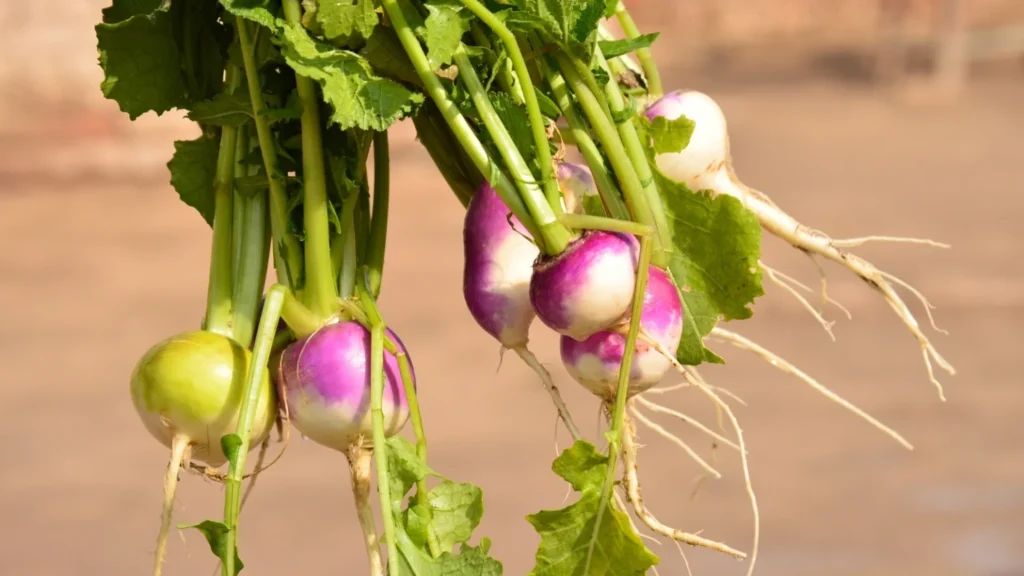
Turnips are fast-growing root vegetables that do exceptionally well in fall gardens and offer both edible roots and greens.
Direct sow seeds in your garden 6 to 10 weeks before your first frost. They prefer loose, slightly acidic soil and grow best in full sun. Water them consistently to keep the roots from becoming woody.
Turnips mature quickly—some varieties are ready to harvest in just 35 days—making them a great choice for gardeners who want a quick return. The leaves, known as turnip greens, are delicious when sautéed or added to soups.
With their pale purple and white globes, turnips also bring a pop of color and rustic charm to garden rows, raised beds, or even decorative barrels arranged around your back porch.
8. Swiss Chard

Swiss chard brings both color and nutrition to your fall vegetable garden, making it a favorite among modern gardeners.
This leafy green is incredibly hardy, able to handle frosts and continue producing well into the cold season. Plant seeds about 8 weeks before your area’s first frost. Chard prefers full sun and moist, well-drained soil, but it’s flexible enough to grow in partial shade.
Swiss chard’s rainbow-colored stems—ranging from red and orange to pink and yellow—add serious eye appeal to your vegetable beds and outdoor living areas. It pairs wonderfully with sleek, modern back porch decor when planted in pots or tiered planters.
Beyond its beauty, chard is packed with vitamins and minerals. Use it in place of spinach or kale in any dish, from soups and sautés to quiches and pastas.
9. Radishes
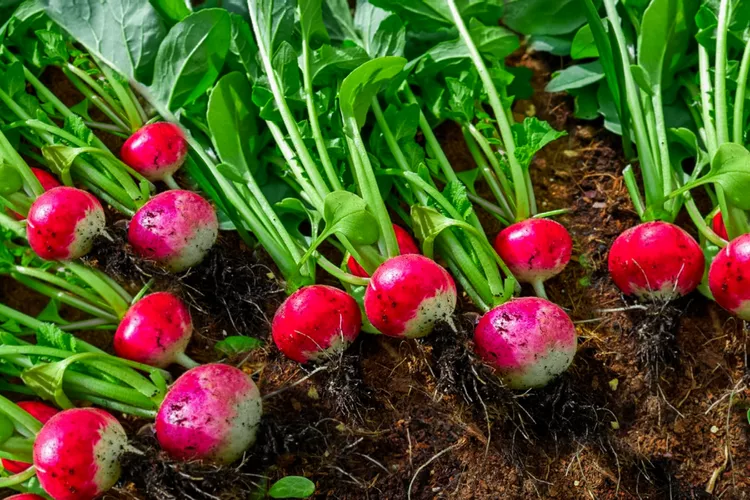
If you’re looking for a super-speedy fall crop, radishes are it.
These quick growers can be harvested in as little as 3 to 4 weeks after sowing, making them perfect for filling in gaps in your garden or testing new soil beds. Plant seeds directly in well-drained soil 4 to 6 weeks before your first frost. They prefer full sun but can tolerate partial shade.
Radishes come in many shapes and colors—round, oblong, white, red, even purple—and can bring a fun, unexpected flair to your garden. They work beautifully as edging plants or as colorful accents in outdoor containers around your patio furniture or walkway.
In the kitchen, radishes add crunch and spice to salads and tacos, and they can also be roasted for a mellower, nutty flavor.
10. Lettuce
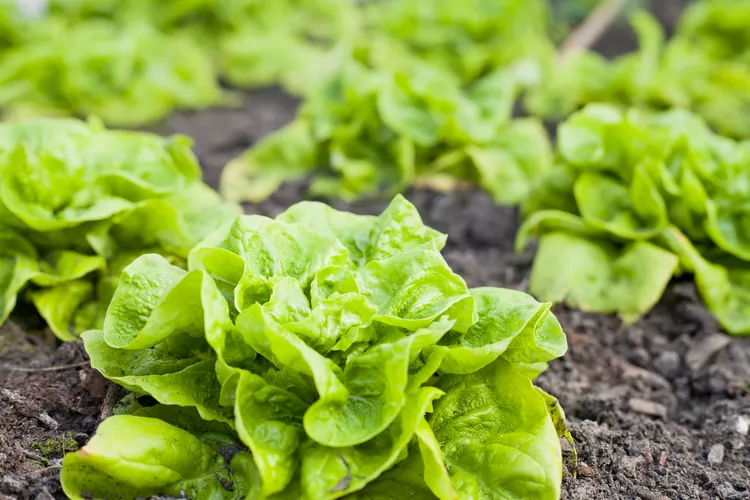
Lettuce is a staple for fall gardening thanks to its love of cooler weather and quick growth cycle.
You can direct sow lettuce seeds as late as 4 to 6 weeks before your first frost, depending on the variety. Loose-leaf types like Red Sails or Black Seeded Simpson are especially frost-tolerant and mature quickly. Use well-draining, fertile soil and keep it consistently moist.
Lettuce grows beautifully in rows or containers and adds soft, textured greenery to your outdoor space. It’s a great crop to plant in raised beds near your back porch for easy harvest while preparing meals outdoors.
You can harvest outer leaves continually, allowing the plant to keep producing. Lettuce is perfect for salads, wraps, or layering on your favorite sandwiches.
11. Arugula
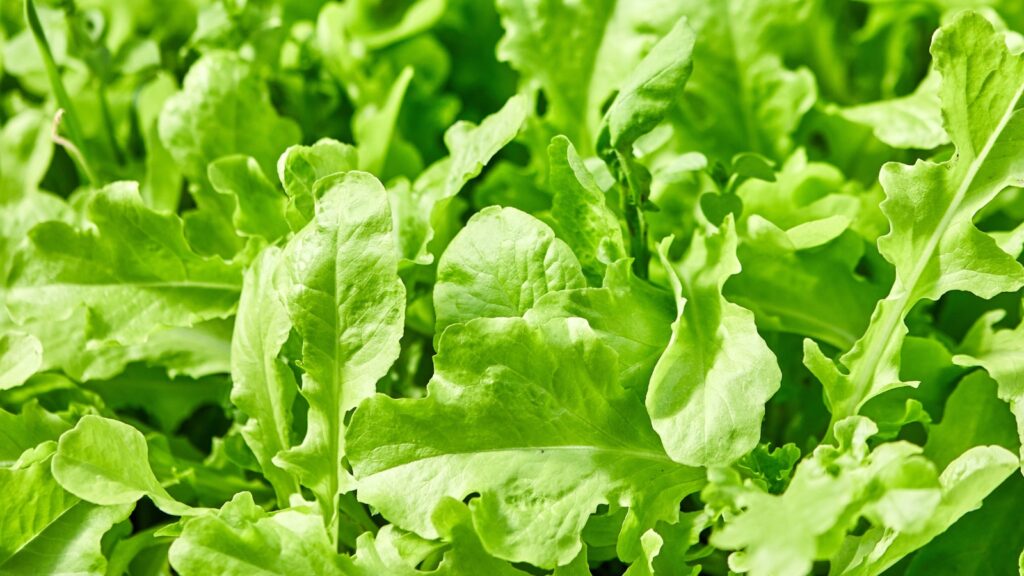
Arugula is a cool-season green with a peppery bite that thrives in fall temperatures.
Plant arugula seeds directly into the garden about 4 to 6 weeks before your first frost. It prefers well-drained soil and partial to full sun. One of the easiest greens to grow, arugula can also reseed itself if left alone, giving you a surprise crop the next season.
Its fast growth and compact size make it an ideal plant for small garden spaces, window boxes, or decorative pots on a modern back porch. It grows quickly—baby greens are ready in just three weeks—and continues to produce when harvested regularly.
Arugula is perfect in salads, pizzas, and even blended into pestos for a bold, peppery kick. It’s a great addition for home chefs who love having fresh ingredients right outside the kitchen door.
12. Brussels Sprouts
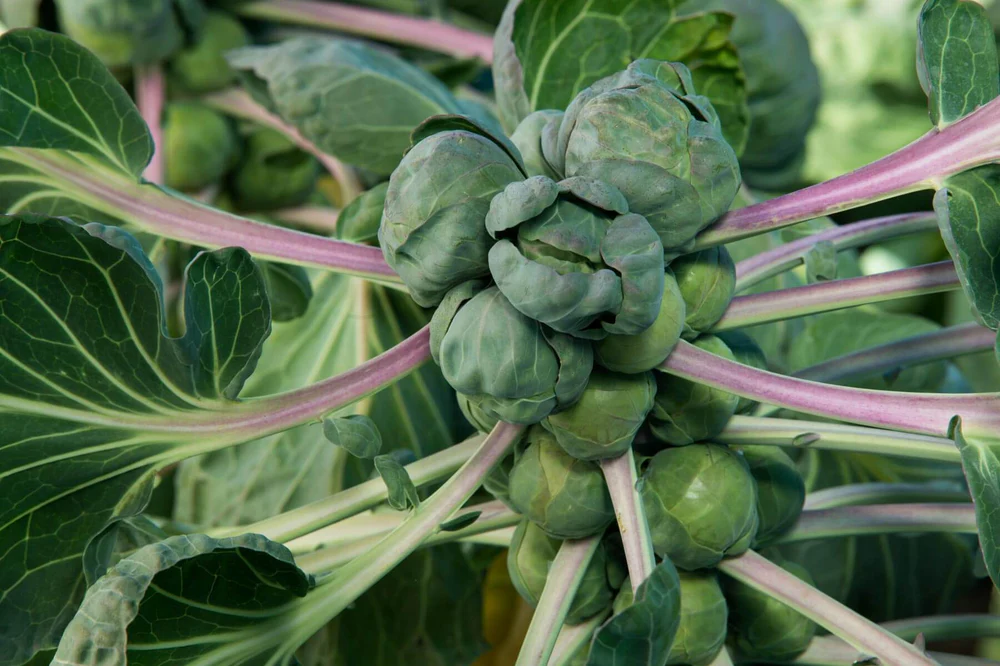
Brussels sprouts are a cool-weather crop that not only thrives in fall gardens but actually improves in flavor after a light frost.
This hardy vegetable takes time to mature—up to 100 days—so you’ll want to start seeds indoors in midsummer or purchase young transplants to put into the ground about 90 days before your first expected frost. They prefer full sun, well-draining soil, and steady moisture for best results.
Brussels sprouts grow vertically, forming little cabbage-like buds along a thick stalk. As they mature, these stalks can reach up to 3 feet tall, creating a dramatic and architectural appearance in your garden. If you’re looking to enhance your back porch decor with something functional yet visually striking, try planting a row of Brussels sprouts along a path or fence.
In the kitchen, roasted Brussels sprouts are a fall favorite. Add them to salads, stir-fries, or serve them with maple glaze for a sweet-savory twist that screams autumn comfort food.
13. Green Onions

Green onions (also called scallions) are a fast-growing, space-saving vegetable that works beautifully in any fall garden.
You can sow them directly into garden beds or containers about 4 to 6 weeks before the first frost. They grow best in full sun and well-draining soil, though they can tolerate partial shade. Because they don’t take up much space, green onions are ideal for growing in pots or small raised beds around your modern patio furniture.
One of their best features? You can harvest green onions multiple times. Simply snip the tops as needed, and they’ll regrow throughout the season. They also work well as companion plants, helping to deter pests from nearby veggies.
Flavor-wise, green onions add a mild, zesty bite to dishes without overwhelming your palate. They’re perfect for garnishing soups, tossing into salads, or folding into creamy dips for fall entertaining.
14. Garlic

Garlic is a unique fall vegetable in that you plant it in the fall but harvest it the following summer. Still, fall is the perfect time to get this flavorful crop started.
Plant individual garlic cloves (pointed end up) about 4 to 6 weeks before the ground freezes. Choose a sunny spot with fertile, well-drained soil, and mulch generously after planting to protect it over winter. Hardneck varieties are best for colder regions, while softneck varieties do well in milder climates.
Garlic requires little maintenance once planted, making it an excellent low-effort addition to your fall garden layout. The long green shoots that sprout in spring also add vertical interest to garden beds near your back porch or patio.
When it comes to flavor, nothing beats homegrown garlic. It’s stronger, fresher, and more aromatic than store-bought varieties—perfect for elevating your fall cooking with rich, savory dishes.
15. Mustard Greens

Mustard greens are a bold and flavorful addition to your fall garden, thriving in cooler temperatures and producing fast results.
Direct sow seeds into well-drained soil about 4 to 6 weeks before your area’s first frost. These greens love full sun but can tolerate partial shade, making them adaptable to various outdoor living layouts.
What sets mustard greens apart is their spicy, peppery flavor—ideal for those who love a bit of bite in their greens. Younger leaves are milder and perfect for salads, while mature leaves hold up well in sautéed or stir-fried dishes.
Their textured, ruffled leaves and rich green color also make them an attractive companion in garden beds or decorative pots on your modern back porch. Try planting mustard greens alongside kale and Swiss chard for a vibrant, edible fall display.
16. Peas
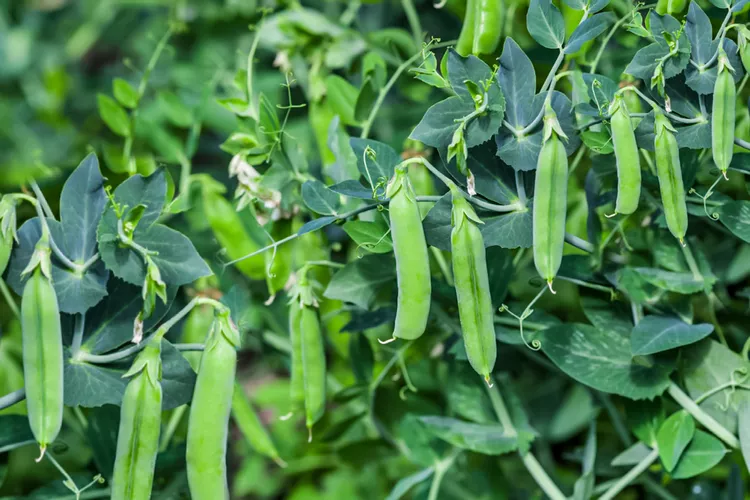
While often considered a spring crop, certain varieties of peas—especially sugar snap and snow peas—can thrive in early fall gardens.
Plant them 8 to 10 weeks before your first frost. They need full sun and well-drained soil. To grow upright and maximize space, provide a trellis or support system, which can also add structure and charm to your outdoor garden beds.
Peas don’t love the heat but perform beautifully in cooler weather. They’re quick to germinate and will provide crisp, sweet pods in just a few weeks. You can even harvest the tender pea shoots for fresh salads or garnish.
The vines add a delicate, climbing element to your garden design, which looks especially appealing around pergolas, trellises, or against a wall near your back porch seating area.
17. Bok Choy
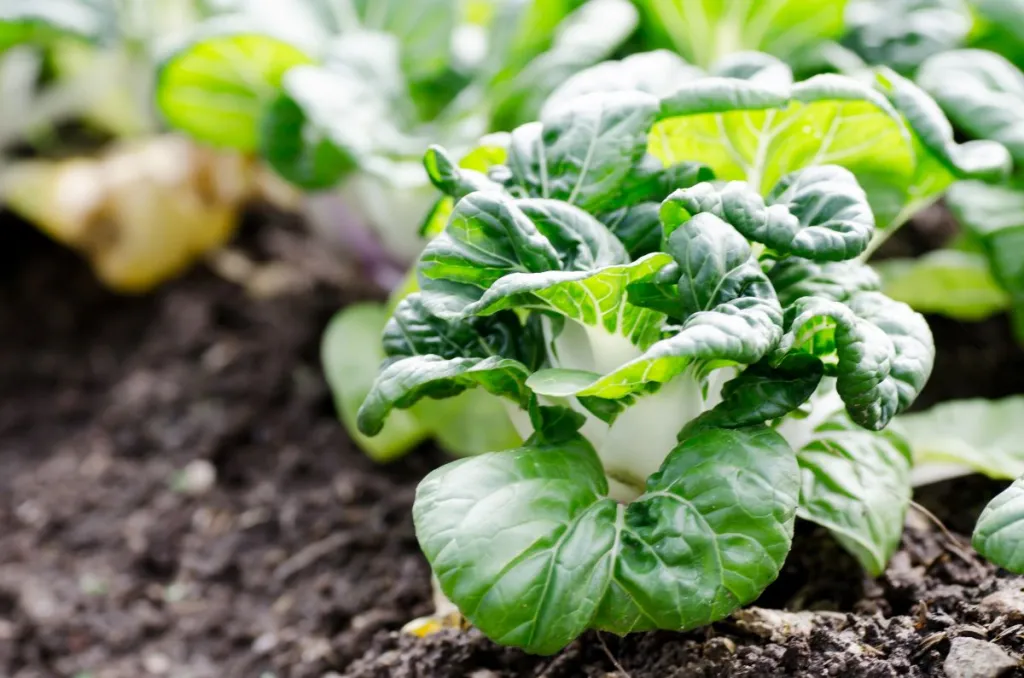
Bok choy, or Chinese cabbage, is a cold-hardy green that grows quickly and adds a crisp texture to fall meals.
Plant seeds directly into the soil 6 to 8 weeks before your average first frost. Bok choy prefers partial sun and rich, well-drained soil. It’s a great choice for container gardening, especially if you want to integrate leafy greens into your modern patio setup.
Bok choy has thick, juicy stalks and dark green leaves. It matures in about 45 days, and baby bok choy varieties can be harvested even sooner. This veggie is excellent in stir-fries, noodle dishes, or simply steamed with sesame oil and garlic.
Its bold, sculptural shape also adds variety and interest to your garden, especially when paired with more traditional greens like kale or spinach.
18. Collard Greens
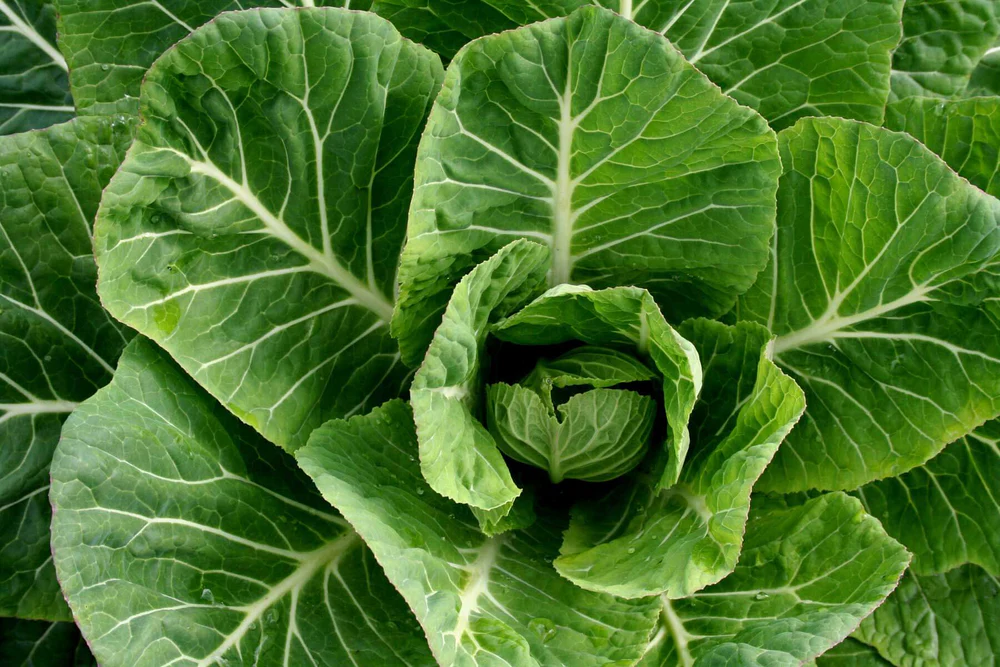
Collard greens are a Southern classic that shine in the cooler fall months.
Plant seeds or transplants 6 to 8 weeks before your first frost. They love full sun and nutrient-rich, slightly acidic soil. These greens can tolerate frost and even light snow, often becoming sweeter after cold exposure.
Collards produce large, flat, blue-green leaves that grow on upright stalks, offering a unique architectural form to your fall garden. Their strong, sturdy appearance adds a sense of structure and height when planted alongside lower greens.
In the kitchen, collards are a comfort food staple—simmered slowly with onions, smoked meat, or garlic until tender. Their robust flavor makes them a fall favorite, perfect for hearty meals served around the table on chilly evenings.
19. Endive

Endive is an elegant, slightly bitter green that grows beautifully in the fall and adds flair to both garden and table.
Sow seeds directly into well-draining soil about 6 to 8 weeks before the first frost. Endive prefers full sun but can tolerate partial shade, especially as the season cools down. It’s a compact plant, making it ideal for container gardens or narrow beds near your porch or patio.
There are two main types of endive—curly and broad-leafed (escarole). Both develop well in fall conditions and are known for their crisp texture and subtle tang. Blanching the inner leaves by tying them together can reduce bitterness and create tender, pale centers.
Endive adds a gourmet touch to salads and pairs well with fruit, nuts, and vinaigrettes. It’s perfect for those looking to bring a bit of restaurant-quality produce to their outdoor living space.
20. Parsnips
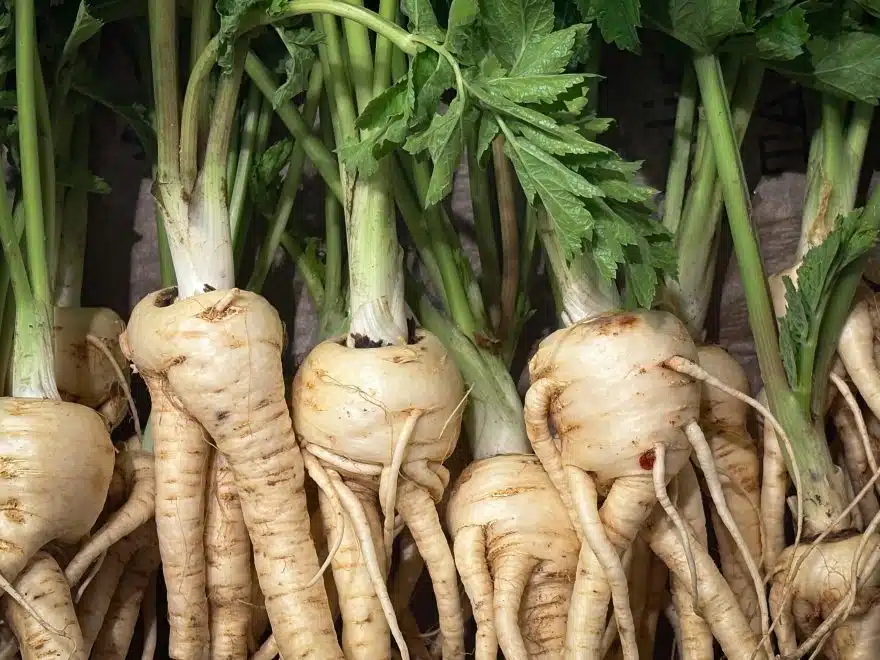
Parsnips are a cold-tolerant root vegetable that rewards patient gardeners with sweet, nutty flavor after frost.
They need a long growing season—about 100 to 120 days—so plant them in late summer to early fall, depending on your zone. Sow seeds directly into loose, deep soil and keep it consistently moist. Parsnips can overwinter in the ground and are often sweetest when harvested after multiple frosts.
These creamy-white roots look a bit like carrots but have a more complex flavor profile. They’re excellent roasted, mashed, or added to soups and stews for a comforting fall meal.
Their tall, fern-like foliage also brings visual appeal to the garden, offering contrast and texture around your back porch or raised beds.
21. Leeks

Leeks are an elegant, mild member of the onion family that grow beautifully through fall and into winter.
Start seeds indoors in late summer or direct sow in the garden 8 to 10 weeks before the first frost. Leeks prefer fertile, well-drained soil and full sun. As they grow, mound soil around the stalks to blanch them, resulting in long, tender white stems.
In the garden, leeks are tall and statuesque, offering vertical beauty and structure to your fall vegetable layout. They look especially stunning in modern outdoor planters or lining walkways near your patio.
Leeks are prized for their subtle, sweet onion flavor, which deepens with slow cooking. They’re perfect for fall soups, risottos, and savory tarts—adding both elegance and comfort to your seasonal cooking.
Conclusion: Grow Your Fall Garden with Confidence
Creating a fall vegetable garden is one of the most satisfying ways to connect with the changing seasons and bring fresh, nutritious food to your table. Whether you’re growing classic greens like kale and spinach or branching out with bold picks like leeks and parsnips, each of these 21 vegetables is tailored to thrive in the cooler months.
Even better, many of these crops can be grown in containers, raised beds, or stylish garden planters—making them ideal for enhancing your outdoor living space, modern back porch, or cozy patio setup. With thoughtful planning and a bit of attention, your garden can provide a lush, productive landscape well into late fall and early winter.
So grab your gloves, prep your soil, and plant something delicious—your autumn harvest awaits!
